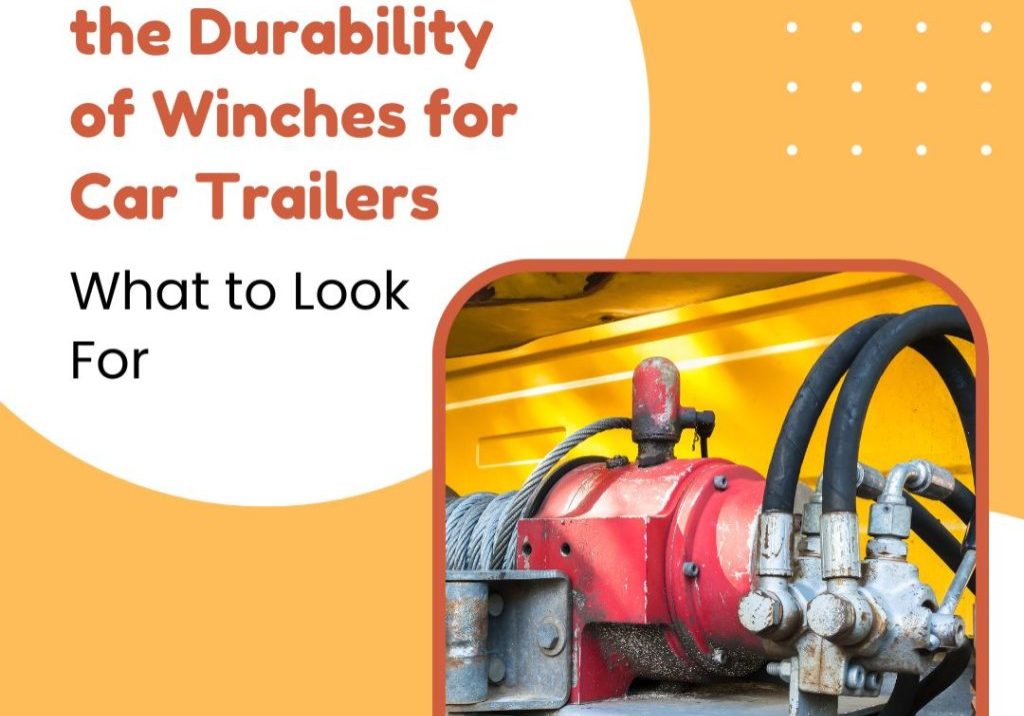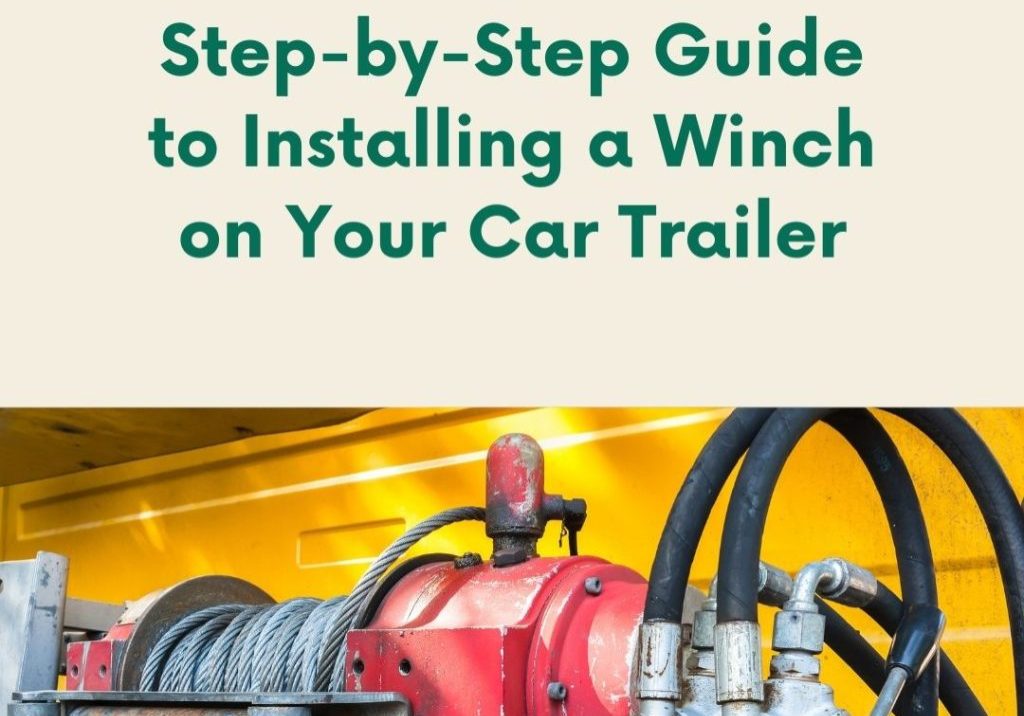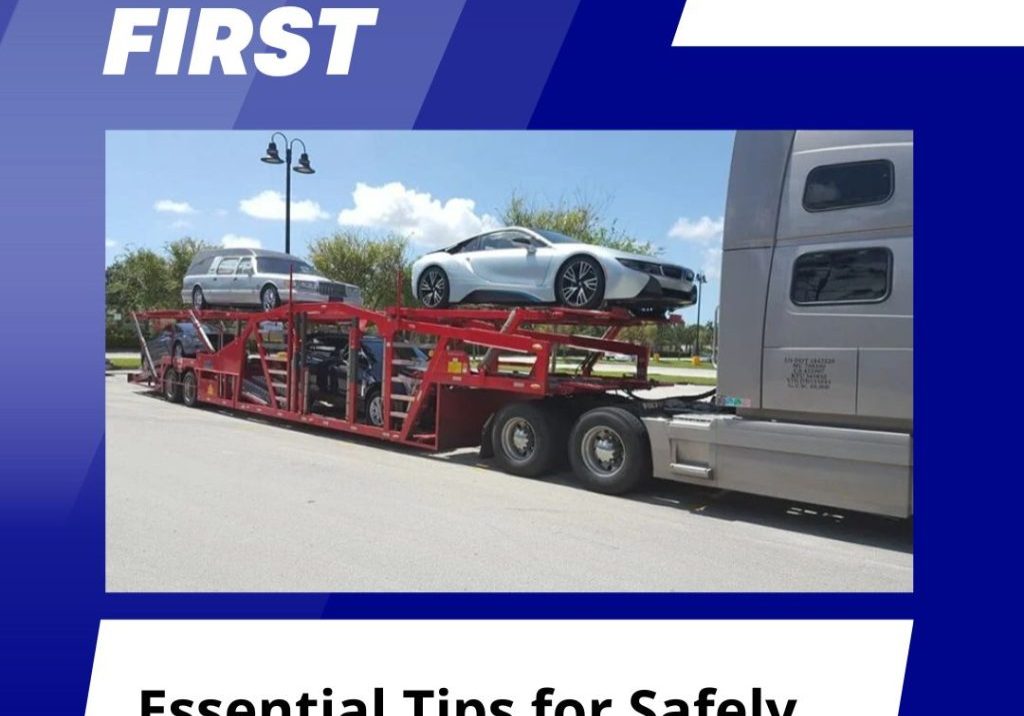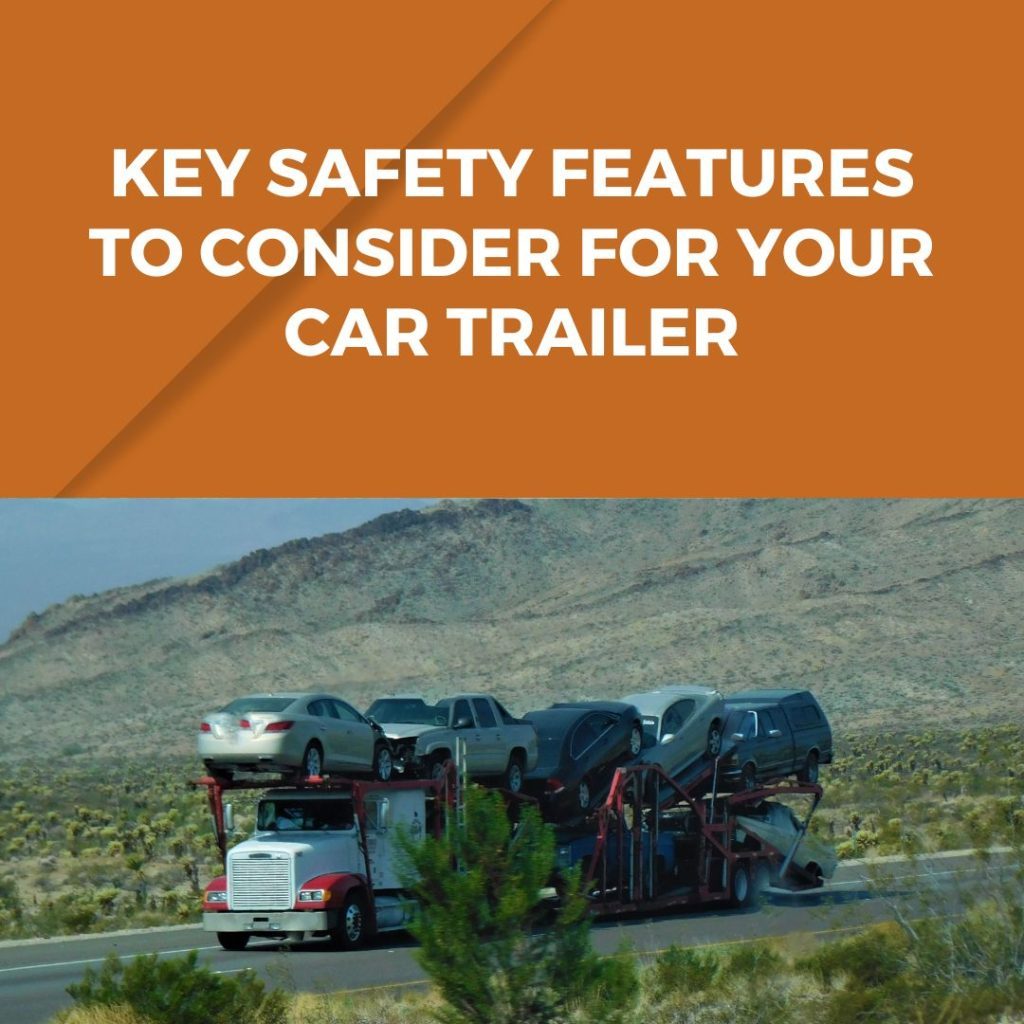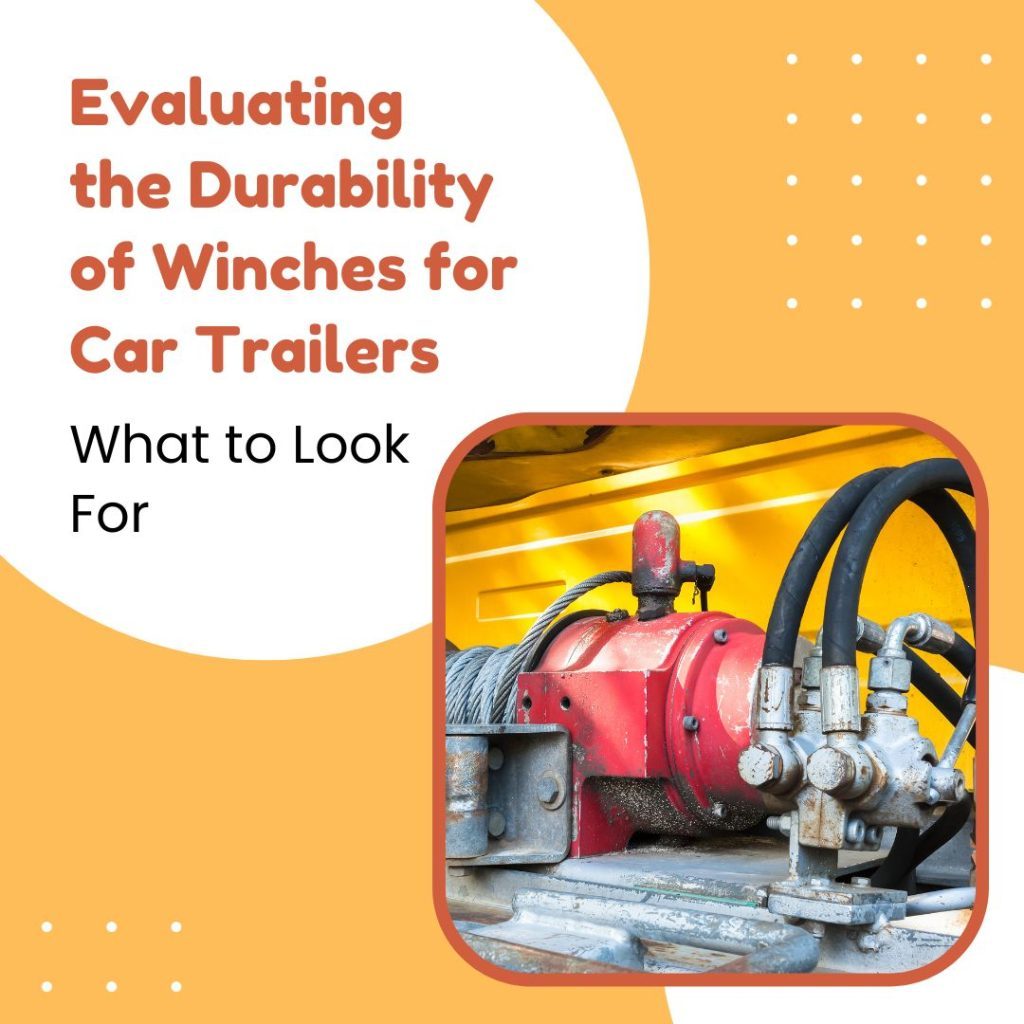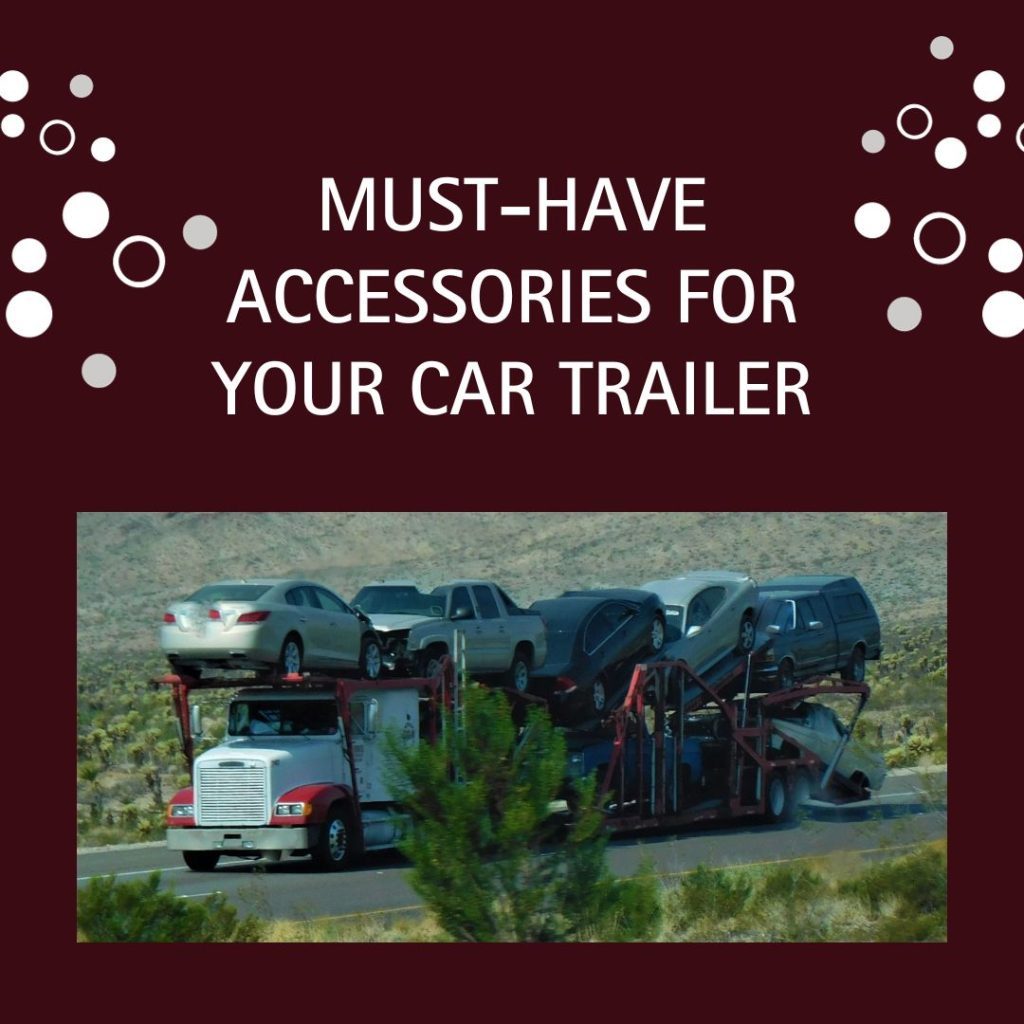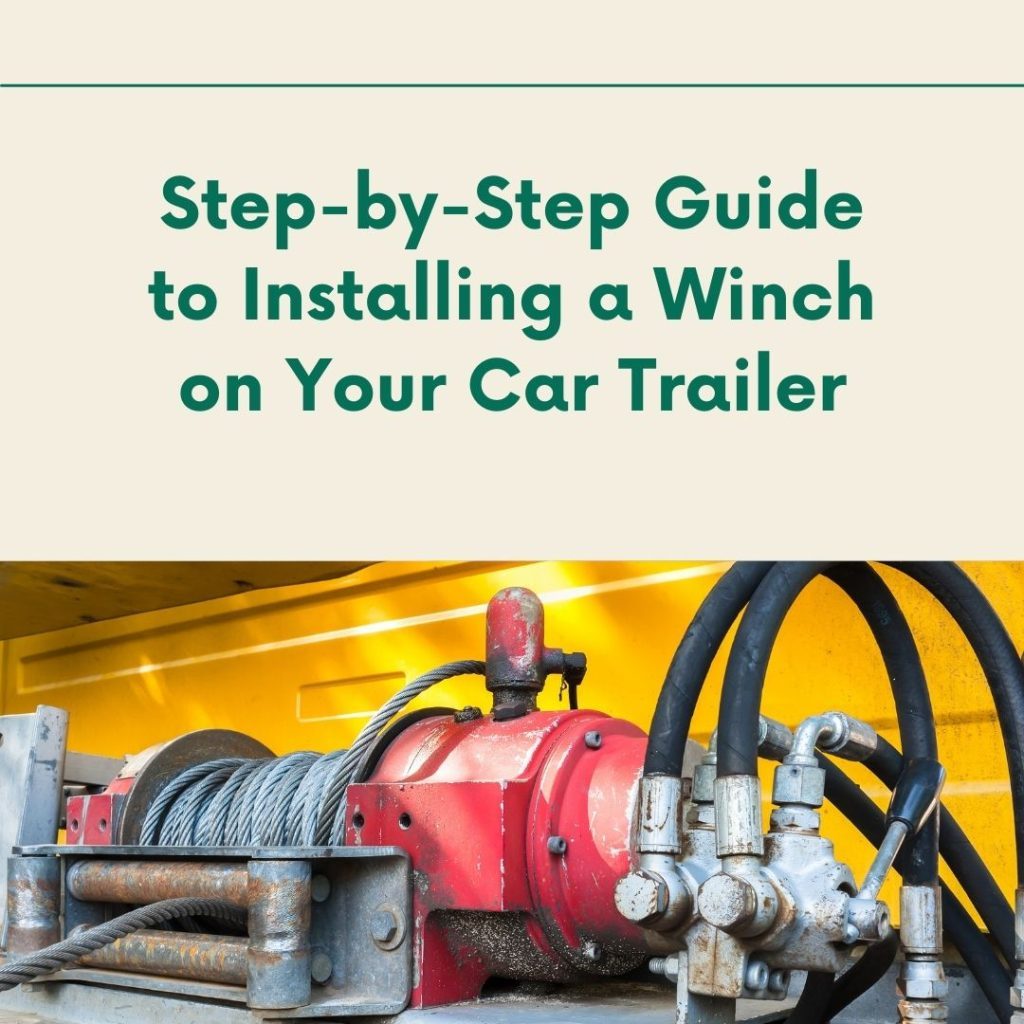Car trailers and winches are indispensable tools for transporting vehicles, equipment, or heavy loads. They enhance capability and safety, making otherwise challenging tasks manageable. However, mastering these tools requires knowledge of their mechanics, an understanding of safety protocols, and the ability to select and maintain the right equipment for your needs.
Embark on this journey with us to master the art and science of car trailers and winching, ensuring every towing and recovery task is performed efficiently, safely, and with the utmost confidence. Your adventure into mastering these powerful tools starts here!
Understanding Car Trailers and Winching
When it comes to towing and recovery, car trailers and winches are indispensable tools that enhance capability, safety, and efficiency. Whether for personal, recreational, or commercial use, understanding the fundamentals of car trailers and winching can significantly impact the success and safety of transporting vehicles and heavy loads. This article aims to provide a comprehensive understanding of these tools, detailing their uses, benefits, and critical considerations.
What Are Car Trailers?
Car trailers are unpowered vehicles towed by a powered vehicle, commonly used for transporting goods, vehicles, and heavy equipment. They come in various sizes, designs, and capacities, tailored to different needs and applications.
Types of Car Trailers
- Flatbed Trailers: Ideal for easy loading and unloading of goods and vehicles.
- Enclosed Trailers: Offer protection from the elements and added security.
- Utility Trailers: Versatile for hauling general goods, often with sides or gates.
Common Uses of Car Trailers
- Vehicle Transportation: Moving cars, motorcycles, or boats to different locations.
- Cargo Hauling: Transporting goods, equipment, or materials for personal or commercial purposes.
- Recreational Use: Carrying camping gear, ATVs, or other recreational equipment.
What is Winching?
Winching is the process of hauling or lifting heavy items using a cable wound around a drum, driven by a motor or manual crank. Winches are critical in vehicle recovery, towing, and load management.
Components of a Winch
- Drum: Where the cable or rope is wound.
- Motor: Powers the winding action (can be electric or hydraulic).
- Cable or Rope: The material used to pull or lift, typically made of steel or synthetic fibers.
- Hook: Attaches the winch cable to objects or vehicles.
Importance of Winching in Vehicle Towing and Recovery
Safe and Efficient Recovery
Winches provide a controlled means to recover stuck vehicles, making them essential for off-roading adventures, rescue operations, and towing services.
Versatility in Applications
Beyond vehicle recovery, winches are used in construction, forestry, and marine applications, showcasing their versatility in handling heavy loads.
Enhanced Capability
With the right winch, even the most challenging and inaccessible terrain becomes manageable, expanding the capabilities of rescue and recovery teams.
Selection of Car Trailers and Winches
Selecting the right car trailer and winch can be the difference between a smooth, safe journey and a problematic one. Whether you’re hauling goods, transporting vehicles, or managing a recovery operation, understanding the key factors that influence your choice will ensure efficiency, safety, and suitability to your needs. This article delves into the critical considerations for choosing the right car trailer and winch, guiding you to make an informed decision.
Factors to Consider When Choosing a Car Trailer
1. Purpose and Use
- Type of Cargo: Determine what you’ll be hauling — vehicles, equipment, or general goods. This decision impacts the trailer type and size.
- Frequency of Use: Consider how often you’ll use the trailer, as this affects the durability and quality you’ll require.
2. Capacity and Size
- Weight Capacity: Ensure the trailer can handle the weight of your cargo plus the trailer’s weight. Overloading can lead to safety issues and legal penalties.
- Dimensions: The size should accommodate your cargo’s dimensions and provide easy loading/unloading.
3. Type of Trailer
- Open vs. Enclosed: Open trailers are suitable for larger items and general hauling, while enclosed trailers offer protection from the elements and added security.
- Special Features: Some trailers come with ramps, multiple levels, or specialized fittings for specific types of cargo.
4. Compatibility with Towing Vehicle
- Towing Capacity: Your vehicle must have the appropriate towing capacity for the trailer’s weight.
- Hitch Type: Ensure the trailer’s hitch type matches your vehicle’s towing hardware.
5. Construction and Material
- Durability: Look for robust construction with quality materials like steel or aluminum.
- Maintenance: Consider the ease of maintenance and availability of spare parts.
6. Safety Features
- Braking System: Trailers should have a reliable braking system, especially for heavy loads.
- Lights and Signals: Ensure all necessary lighting and signals are present and compatible with your towing vehicle.
7. Legal and Compliance Issues
- Regulations: Familiarize yourself with local laws regarding trailer size, weight, and required documentation.
- Insurance: Ensure that your trailer and its contents are adequately insured.
Installation and Maintenance of Car Trailers and Winches
Proper installation and regular maintenance of car trailers and winches are crucial for ensuring safety, longevity, and optimal performance. This article provides a step-by-step guide to installing a winch on your car trailer and essential maintenance tips for both car trailers and winches. Following these guidelines will help ensure that your equipment remains reliable and efficient over time.
Step-by-Step Guide to Installing a Winch on Your Car Trailer
1. Selecting the Right Winch
Before installation, ensure the winch is suitable for your trailer’s weight capacity and size. Choose between electric or hydraulic models based on your needs and the power source available.
2. Gather Necessary Tools and Materials
You’ll need basic tools like wrenches, a drill, and mounting bolts. Ensure you have the winch, mounting plate, and any specific hardware recommended by the winch manufacturer.
3. Mounting the Winch
- Prepare the Area: Choose a mounting spot on the trailer, usually at the front, and ensure it’s clean and accessible.
- Secure the Mounting Plate: Attach the mounting plate securely to the trailer using bolts. Ensure it’s aligned and leveled.
- Attach the Winch: Bolt the winch onto the mounting plate following the manufacturer’s instructions. Ensure all connections are tight and secure.
4. Wiring the Winch
- Connect to Power Source: For electric winches, run the wiring from the winch to your vehicle’s battery or a separate battery, ensuring it’s properly grounded.
- Safety Checks: Ensure all electrical connections are insulated and secure to prevent shorts or disconnections.
5. Test the Winch
Before using it, test the winch operation in a controlled environment. Check the forward and reverse functions, and ensure the cable spools and unspools smoothly.
Essential Maintenance Tips for Car Trailers and Winches
For Car Trailers
- Regular Inspection: Check for any signs of wear, rust, or damage, especially in the frame, axles, and hitch area.
- Tire Maintenance: Keep tires properly inflated and check for tread wear regularly. Replace tires as needed.
- Lubrication: Grease the wheel bearings, hinges, and any moving parts to ensure smooth operation.
- Brake and Light Systems: Regularly test and maintain the brake system and ensure all lights are functioning correctly.
- Cleanliness: Keep the trailer clean from dirt, grime, and corrosive materials, especially after transporting corrosive loads or driving in harsh conditions.
For Winches
- Cable Care: Regularly inspect the winch cable or rope for fraying, kinks, or wear. Replace it if damaged.
- Lubrication: Lubricate the winch’s moving parts according to the manufacturer’s specifications to ensure smooth operation.
- Electrical Connections: Check electrical connections for corrosion or damage, especially if the winch is exposed to harsh conditions.
- Operational Check: Periodically test the winch to ensure it operates smoothly. Look for any unusual noises or difficulties during spooling.
- Clean and Cover: Keep the winch clean from dirt and debris. Consider using a cover to protect it when not in use.
Advanced Winching Techniques
Winching is a critical skill for off-road enthusiasts, rescue operations, and anyone who needs to move heavy loads. While basic winching is straightforward, mastering advanced techniques can significantly enhance safety and efficiency. This article explores detailed advanced winching techniques suitable for various challenging scenarios, providing you with the knowledge to handle complex recovery situations.
Understanding the Basics
Before diving into advanced techniques, it’s essential to have a firm grasp of basic winching principles, including understanding your winch’s capacity, the nature of the cable (synthetic rope or steel), and standard safety practices.
Advanced Techniques for Various Scenarios
1. Double-Line Pull
- Purpose: To increase the pulling power of the winch and reduce strain on the winch motor.
- How-To: Use a snatch block to double back the cable to your vehicle, effectively halving the load on the winch and doubling its power.
2. Rigging for Angled Pulls
- Purpose: To change the direction of a pull when direct line-of-sight pulling isn’t possible.
- How-To: Employ snatch blocks and anchor points to create a safe angle for the pull. Ensure all pulley points are secure and capable of handling the redirected force.
3. Tandem Winching
- Purpose: To combine the power of two winches for extremely heavy loads or difficult recoveries.
- How-To: Coordinate two vehicles with winches to pull simultaneously. This requires careful planning and communication to ensure the forces are balanced and effective.
4. Using a Deadman Anchor
- Purpose: To create an anchor point when none are available.
- How-To: Bury a log, rock, or spare tire deep enough to act as an anchor for the winch cable. Ensure it’s well-secured and capable of handling the load.
5. Winching With Pulleys
- Purpose: To increase the winch’s pulling power and to navigate complex recovery paths.
- How-To: Use pulleys or snatch blocks to create a mechanical advantage. This can be configured in various ways depending on the scenario and required pulling direction.
Safety and Efficiency in Advanced Winching
- Preparation: Always assess the situation carefully, plan your recovery strategy, and communicate with all involved parties.
- Inspection: Regularly inspect all equipment, including the winch, cables, snatch blocks, and anchors, for any signs of wear or damage.
- Control: Maintain a slow and controlled pull to prevent sudden shocks or jerks that could lead to cable snap or equipment failure.
- Clear Area: Ensure that the area around the winching operation is clear of people and potential hazards.
Safety Considerations for Operating Car Trailers and Winches
The operation of car trailers and winches involves significant risk if not conducted with proper knowledge and precautions. Ensuring the safety of yourself and others, as well as the integrity of the load and equipment, is paramount. This article provides comprehensive safety guidelines for operating car trailers and winches and discusses the key safety features to be aware of.
Comprehensive Safety Guidelines
Operating Car Trailers
- Weight and Distribution: Ensure the load does not exceed the trailer’s weight capacity and is evenly distributed to maintain stability.
- Hitching Properly: Secure the trailer to the towing vehicle with a suitable hitch and double-check all connections.
- Braking Systems: Understand and maintain the trailer’s braking system, ensuring it is synchronized with the towing vehicle.
- Tire Safety: Regularly check tire pressure and condition. Replace any tires that show signs of wear or damage.
- Lights and Signals: Ensure all lights and signals are operational and visible. They should synchronize with the towing vehicle’s signals.
- Secure Load: Securely fasten the load to prevent any movement during transit. Use appropriate straps, nets, or chains.
- Regular Inspection: Before each use, inspect the trailer for any structural damage, loose bolts, or worn parts.
Operating Winches
- Understand Capacity: Never exceed the winch’s maximum weight capacity. Understand the load and the winch’s limits.
- Wear Gloves: Always wear gloves when handling winch cables to prevent injuries from frayed wires or burns from friction.
- Clear the Area: Ensure that the area around the winching operation is clear of people and potential hazards.
- Use a Damper: Place a damper on the cable or rope to reduce the risk if it breaks. This helps the broken line fall to the ground more quickly, reducing the risk of injury.
- Remote Operation: If possible, operate the winch remotely to maintain a safe distance.
- Regular Maintenance: Inspect the winch, cable, and all connections regularly for wear or damage. Replace any faulty components immediately.
Key Safety Features of Car Trailers and Winches
Car Trailers
- Sturdy Frame and Build: A robust construction to handle the load and stress.
- Effective Braking System: Either electric or surge brakes that are well-maintained.
- Safety Chains: Secondary safety feature to keep the trailer attached to the towing vehicle in case of hitch failure.
- Reflective Markings: Visibility enhancements for other road users, especially in low light conditions.
Winches
- Automatic Brake: Holds the load securely when the winching process stops.
- Remote Control: Allows operation from a safe distance.
- Synthetic Rope: Offers a safer alternative to steel cables, as it stores less kinetic energy and is less likely to cause severe injuries if it breaks.
- Overload Indicator: Some winches include features to alert the user when the load is exceeding the safe operating range.
Enhancing Your Car Trailer with Accessories and Upgrades
Equipping your car trailer with the right accessories and upgrades can significantly enhance its functionality, safety, and longevity. From improving load security to ensuring smooth transportation, the right enhancements make all the difference. This article provides a guide to must-have accessories for your car trailer and offers insights on evaluating the durability and quality of winches.
Must-Have Accessories for Your Car Trailer
1. Tie-Downs and Anchors
- Description: Secure your cargo with reliable tie-downs, such as straps, chains, or ropes, and anchors.
- Benefits: Prevents cargo from shifting or falling off the trailer, ensuring safe transportation.
2. Trailer Locks
- Description: Protect your trailer from theft with hitch locks, wheel locks, and coupler locks.
- Benefits: Provides security when your trailer is parked, deterring theft and unauthorized use.
3. Wheel Chocks
- Description: Prevent your trailer from rolling unintentionally with sturdy wheel chocks.
- Benefits: Essential for safety during loading and unloading or when parked on an incline.
4. Spare Tire and Mount
- Description: Carry a spare tire specifically for your trailer and a reliable mounting system.
- Benefits: Ensures you’re prepared for tire-related emergencies, minimizing downtime.
5. Tool Box
- Description: Install a toolbox on your trailer to store essential tools and accessories.
- Benefits: Keeps tools organized and readily available for repairs and adjustments.
6. Ramps
- Description: Portable ramps for loading and unloading vehicles or heavy equipment.
- Benefits: Simplifies the loading process, especially for heavy or wheeled cargo.
7. Lighting and Reflectors
- Description: Upgrade or add additional lighting and reflective materials.
- Benefits: Enhances visibility and safety, especially during night travel or in poor weather conditions.
Evaluating the Durability and Quality of Winches
1. Material and Construction
- Consideration: Look for winches made from high-quality materials like sturdy metals for the body and durable synthetic or steel for the cable.
- Impact: Affects the overall longevity and reliability of the winch under various conditions.
2. Motor Type and Performance
- Consideration: Understand the type of motor used (electric or hydraulic) and its performance metrics.
- Impact: Determines the efficiency, power, and suitability of the winch for different tasks.
3. Load Capacity
- Consideration: Ensure the winch’s load capacity is suitable for your typical needs and a bit beyond for safety.
- Impact: Affects the safety and effectiveness of recovery or hauling tasks.
4. Brand Reputation and Reviews
- Consideration: Research brands and read reviews from other users.
- Impact: Provides real-world insights into the winch’s performance and durability.
5. Warranty and Support
- Consideration: Look for products with a solid warranty and good customer support.
- Impact: Ensures you’re covered in case of defects or issues, indicating manufacturer confidence in the product.
Conclusion
Whether for personal, recreational, or professional purposes, the insights and guidelines provided will help ensure that your towing and recovery tasks are carried out efficiently, safely, and successfully. Remember, mastery comes from a combination of knowledge, the right equipment, and ongoing practice. Keep informed, stay prepared, and continue to enhance your skills as you navigate the world of car trailers and winching.


